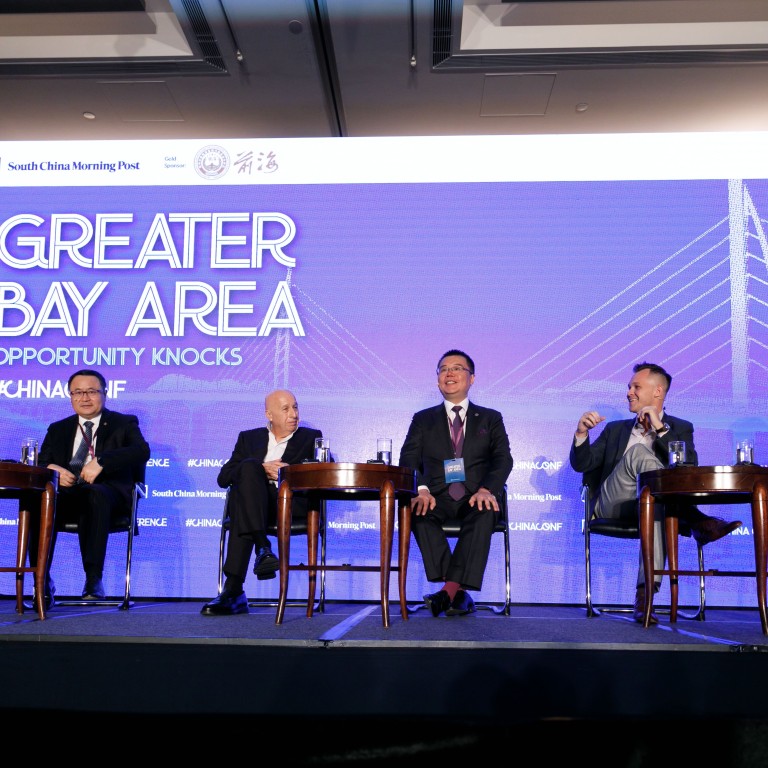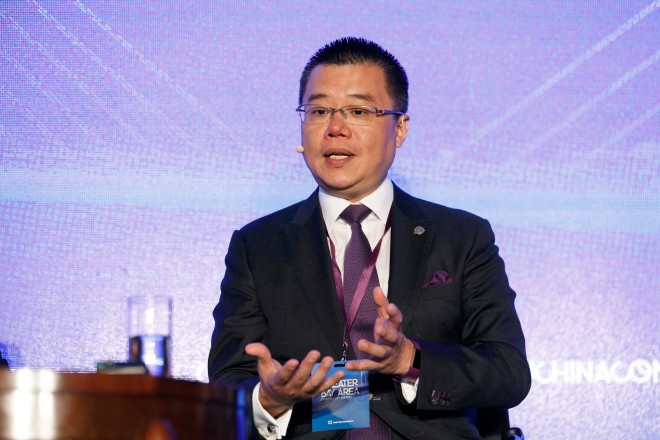
Collaboration is the Greater Bay Area’s competitive advantage
[Sponsored Article]
Beijing’s Outline Development Plan for the Guangdong-Hong Kong-Macao Greater Bay Area, published early this year, lays out a vision for a vast technology, finance, manufacturing and logistics hub built on a network of nine major cities in Guangdong, plus Hong Kong and Macau. The ambitious schedule set by the Outline Development Plan (ODP) states that the ‘framework’ of the Greater Bay Area (GBA) should be in place by 2022 and that the GBA should have become an effective economic system supported by innovation by 2035.
Is such a project feasible? Well, the growing success of the Qianhai Shenzhen-Hong Kong Modern Service Industry Cooperation Zone could well serve as a prototype for the type of collaboration that will be needed. Established in 2011, there are currently over 180,000 companies registered in Qianhai.

Professor Whitman Hung, Principal Liaison Officer for the Hong Kong, Shenzhen Qianhai Authority, says that although the GBA project will be market-driven, collaboration rather than ‘malign competition’ between the eleven cities is key to the project’s success.
“Today it’s more about clusters of cities competing against other clusters, rather than city against city,” Hung says, pointing to the areas around New York, San Francisco and Tokyo. “So we need to work together to compete with the other such city-clusters.”
Even in a market-driven environment, Hung can’t imagine a Hong Kong that is committed to the goals of the ODP losing its status as, along with Macau, Shenzhen and Guangzhou, one of the GBA’s four pillars. He says the central government has continued faith in the SAR and recognises it has qualities which are unique within the region.
Though the city is a regional centre for logistics and maritime trade, and a global passenger and air cargo hub, it’s not its capacity to facilitate physical connectivity that is most highly prized. Today, Hong Kong is no longer just a window for foreign investment into China, Hung points out. “That’s changed in the last half-decade, or so. Now it’s also a major window for Chinese companies to invest into the outside world.” And, for the foreseeable future at least, no mainland city will be able to take on Hong Kong’s role as an offshore renminbi centre.
Furthermore, beyond its position as one of the world’s most significant and trusted international financial centres, the city can also leverage its distinct legal system to become the dispute resolution centre for the whole of Asia.
However, Hung does strongly believe that it is only when all these strengths work in concert with, for example, Shenzhen’s huge scope for technological innovation, that the GBA’s full potential can be realised. “There will be competition for talent, but I think the cities in the Greater Bay Area are more complementary to one another. If you look at the industry mix of Shenzhen and Hong Kong they are really very complementary to each other.”
On the mainland, the central government does get involved in the development of industries, and for some decisions, the Guangdong cities do need state-level or ministerial-level approval. The ODP states that the development of designated industries will be “encouraged” and “supported” in specific GBA cities, and Hung says a careful reading of the plan indicates funding and incentives will follow if they focus on these.
Nonetheless, he adds, Beijing is not going to micro-manage the GBA. “What the government does is: A, provide the structure; and, B, regulate.”
The ODP vision is for ‘innovation-driven and reform led’ growth. In terms of regulatory collaboration, the goals are simplification and the avoidance of duplication. So, when it comes to issues of food safety, it would make sense, for example, to ask the question, “Can we do the checking on one side of the border and then share the data?”
Hung accepts that, with social discontent and violence on the streets, Hong Kong is going through difficult times. Commercial damage has also been done, with the tourism and retail sectors particularly hard hit. Some of this damage may be permanent but he believes the situation can, and should, be resolved internally, within Hong Kong. “The GBA offers Hong Kong a lot of opportunities but it is not a solution to Hong Kong’s problems. We shouldn’t try to outsource our problems.”
What’s more, he doesn’t advocate a policy of actively encouraging the SAR’s young people to cross the border. “Everybody is responsible for their own future. As community leaders, all we have to do is tell them what’s happening, and present them with the facts and the opportunities. Then it is their own decision.”
The GBA won’t be for every Hongkonger, he adds, especially those with lower-level skills – and only 30 per cent of the city’s population has been educated to undergraduate level or above. “However, I do think the Greater Bay Area offers great opportunities for those who study science, technology, engineering or IT.”
Prof. Witman Hung is a principal liaison officer for Hong Kong with The Shenzhen Qianhai Authority and was a speaker at the SCMP’s China Conference: Greater Bay Area.
